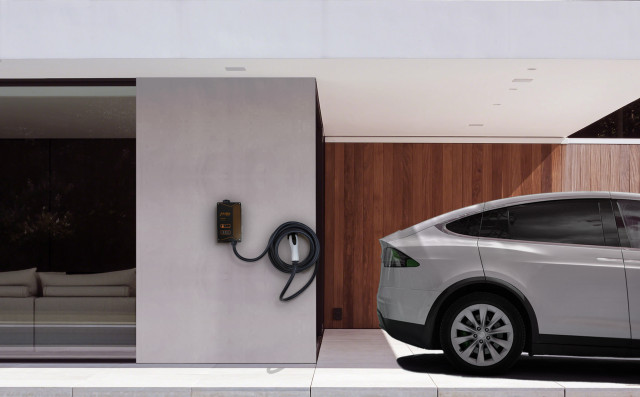
eMotorWerks JuiceBox wall mount charging Tesla Model X
At first blanch, a new business agreement between home charger manufacturer eMotorWerks and utility software provider LO3 Energy sounds strictly like the stuff of dull business contract lawyers.
Dig a little deeper, though, and it could be the kernel of the next generation electrical system, long discussed, but never-quite-practical vehicle-to-grid infrastructure.
As many electric-car drivers know, eMotorWerks builds networked JuiceBox home chargers, some faster than most others, that allow users to program them via the internet to start and stop charging as energy rates fluctuate. The boxes access live rate information as they let drivers program when they need a full charge in their car, so the car will be fully charged, at the lowest possible cost, before they need to go. (Users can also do simpler things, like check on the car's state of charge and set it to start and stop remotely, from a cell-phone app.)

eMotorwerks JuiceBox Pro 40 networked home EVSE electric-car charging station
LO3 Energy provides software that allows utilities to trade electricity on the grid, setting prices and managing supply and demand to ensure seamless power delivery to end users. It ensures that when you're connected to the grid, especially if you've signed up for green or renewable electricity, when you flip the switch on your wall, the light goes on—and the energy is produced by whatever source you signed up for.
The eMotorWerks JuiceNet platform enables control over local energy flows, while LO3’s software enables energy trading on local networks at set prices.
The tie-up between the companies, announced last month, aims to demonstrate that not only can JuiceBox users get the lowest available rates, they can also ensure that they get power supplied to their plug-in cars from appropriately renewable sources.
READ MORE: Utility V2G test with BMW shows electric cars can aid the grid
In their latest agreement, the companies plan to select an LO3 microgrid site, such as one the company operates in Brooklyn, New York, to demonstrate the program. (It could select a different LO3 microgrid.) The pilot project is expected to show how spreading charge times across multiple cars can reduce peak demand on the grid while still charging all the cars that need to get charged.
The companies point to an eMotorWerks demonstration project announced in September in California as an example. It uses 6,000 electric-car chargers to balance up to 30 mega-watts of renewable power in the state, to reduce on-peak demand for non-renewable power—the equivalent of 120,000 home air conditioners.
Page 1 of 2